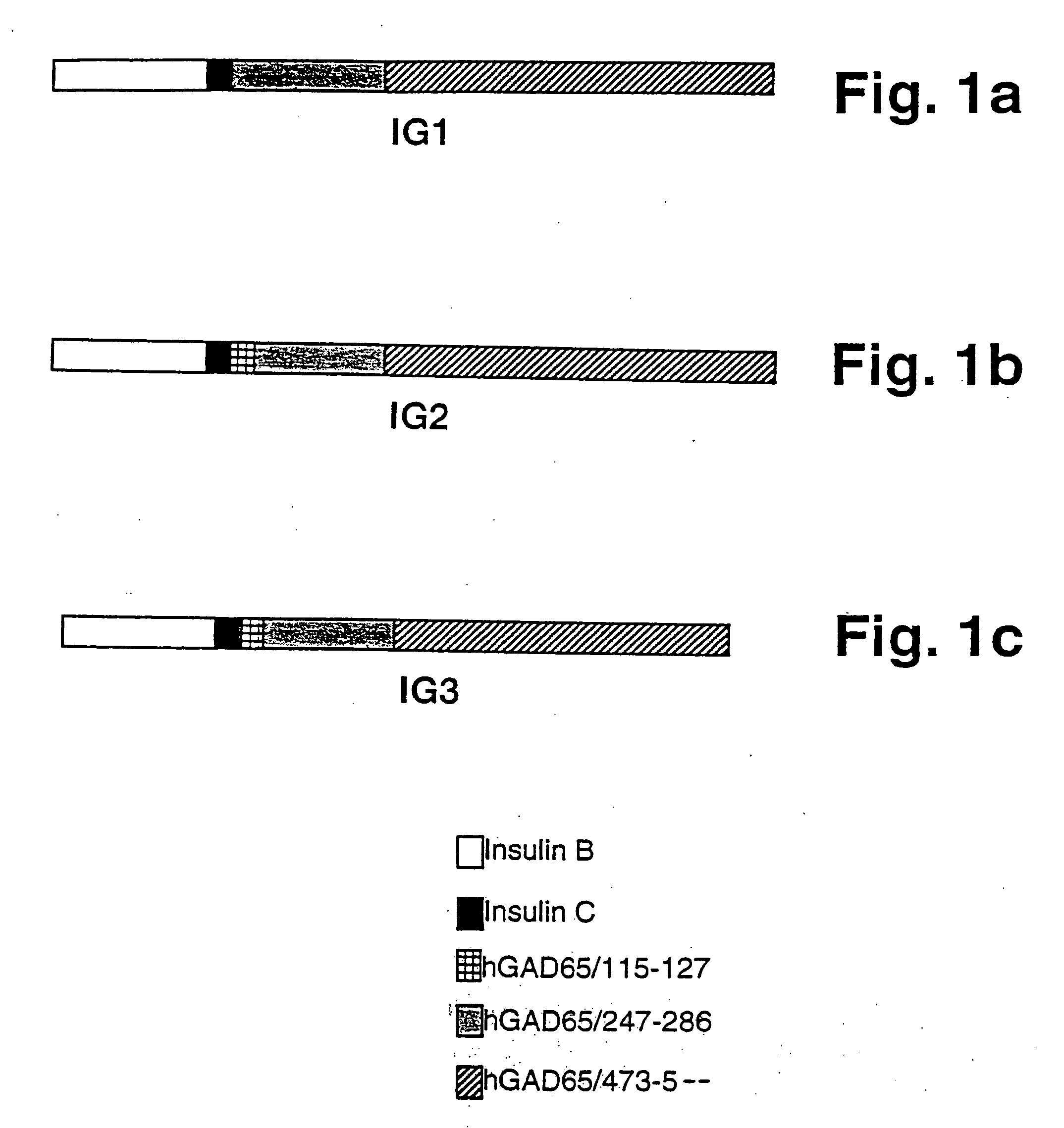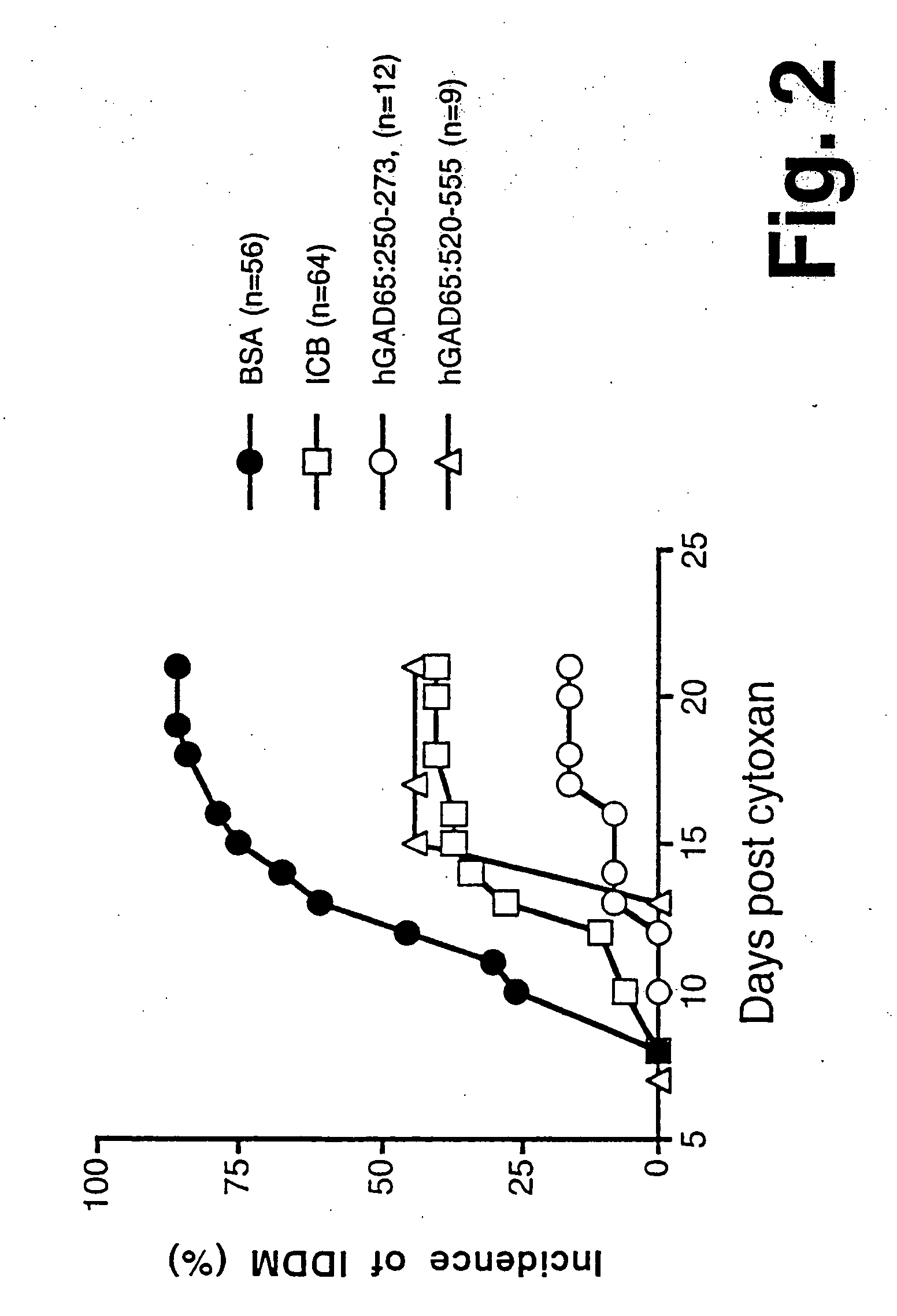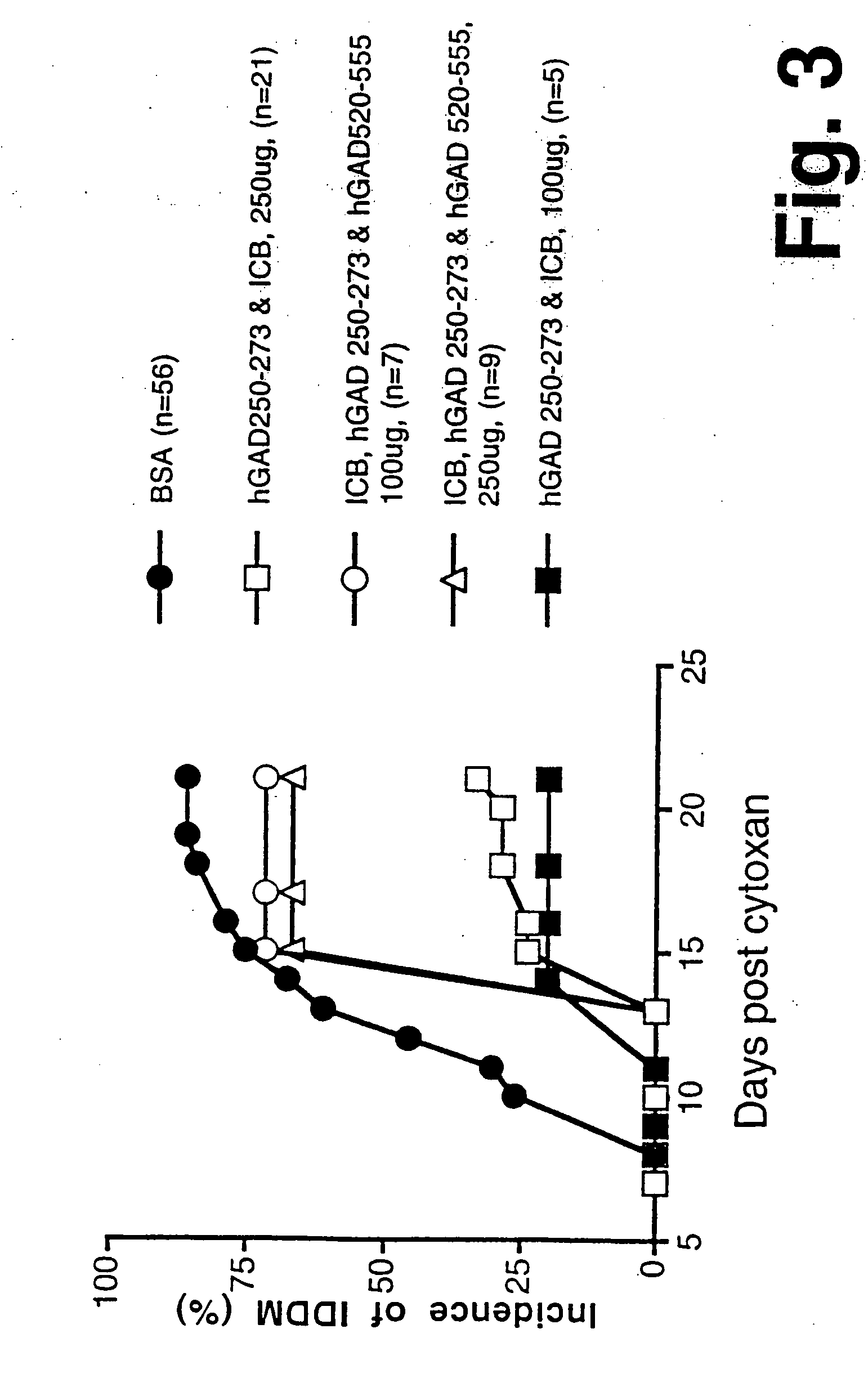Chimeric proteins for diagnosis and treatment of diabetes
a technology of chimeric proteins and diabetes, applied in the direction of peptides, drug compositions, metabolic disorders, etc., can solve the problems of multiple organ system complications, hyperglycemia, high blood glucose levels, etc., and achieve enhanced beneficial effects and facilitate diagnosis and prognostic evaluation.
- Summary
- Abstract
- Description
- Claims
- Application Information
AI Technical Summary
Benefits of technology
Problems solved by technology
Method used
Image
Examples
examples
GENES FOR EXPRESSION OF CHIMERIC PROTEINS OF THE INVENTION
[0102] IG1. A synthetic chimeric gene encoding chimeric protein IG1(SEQ ID NO:1) was constructed in two rounds of overlapping PCR (Ho et al., 1989). Each gene subdomain was synthesized in a standard PCR 100 μl reaction using 10 pmole of each of the appropriate oligonucleotide primers, as described below. The 5′ gene segment was amplified using the overlapping primers:prIGl (SEQ ID NO:11), and prIG2 (SEQ ID NO:12). The 3′ gene segment was amplified using the overlapping primers prIG3 (SEQ ID NO:13) and prIG4 (SEQ ID NO:14). The prIG1 oligo-nucleotide (SEQ ID NO:11) was designed to allow creation of a unique NdeI restriction site at the 5′ end. The prIG4 primer (SEQ ID NO:14)included a unique BamHI site, stop codon (TAA) and 18 nucleotides that encoded a histidine tag sequence for purification of the recombinant chimeric protein by metal affinity chromatography. The two subdomains were combined using flanking oligonucleotides ...
PUM
| Property | Measurement | Unit |
|---|---|---|
| molecular weight | aaaaa | aaaaa |
| molecular weight | aaaaa | aaaaa |
| molecular weight | aaaaa | aaaaa |
Abstract
Description
Claims
Application Information
 Login to View More
Login to View More - R&D
- Intellectual Property
- Life Sciences
- Materials
- Tech Scout
- Unparalleled Data Quality
- Higher Quality Content
- 60% Fewer Hallucinations
Browse by: Latest US Patents, China's latest patents, Technical Efficacy Thesaurus, Application Domain, Technology Topic, Popular Technical Reports.
© 2025 PatSnap. All rights reserved.Legal|Privacy policy|Modern Slavery Act Transparency Statement|Sitemap|About US| Contact US: help@patsnap.com



